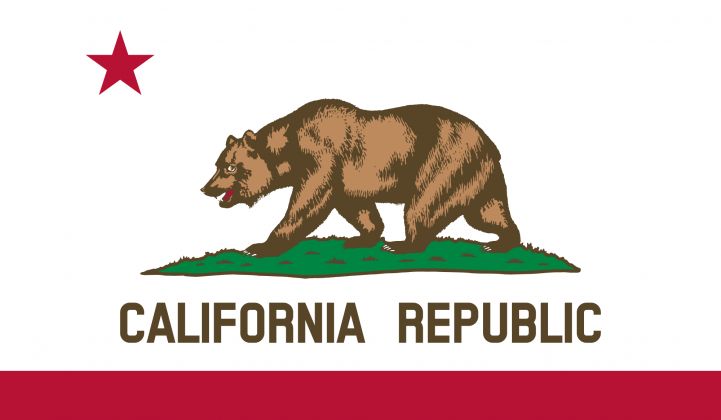California is already changing its utility and energy regulations to incorporate rooftop solar, behind-the-meter energy storage, plug-in electric vehicles and other grid-edge resources, arguably faster than any other state. But a group of utilities and energy industry members have ideas for even more radical transformations ahead.
On Tuesday, the Advanced Energy Economy Institute released a report that calls for California regulators to consider entirely new ways for its major utilities to invest in and operate a distributed energy resource-rich grid, and how to get paid for it.
The report, Toward a 21st Century Electricity System in California, lays out a laundry list of concepts that could help utilities shed their institutional need for investing in traditional generation and grid infrastructure, and encourage them to embrace customer-owned and third-party-controlled distributed energy resources (DERs) as an alternative.
The ideas aren’t that novel in and of themselves. What’s more noteworthy is the list of participants in the working group that created the document. That list includes California utilities Pacific Gas & Electric and Southern California Edison, as well as DER providers like SolarCity, Stem, SunPower, Enphase, EnerNOC, ChargePoint and SunEdison, which have at times sparred with the state’s utilities over how to balance utility and third-party interests when it comes to distributed energy.
Some of the ideas fit into changes already underway in the state, including the California Public Utility Commission’s creation of distribution resource plans (DRPs) that incorporate DER options into utility grid-planning and investment regimes. There’s also the ongoing revision of the state’s net metering rules, work on new energy-efficiency and demand-response schemes, and of course, the inclusion of energy storage in grid planning and operations.
But "the general feeling among our companies and the utilities was that no one was tying all of the pieces together into a cohesive strategy," Steve Chadima, director of California initiatives at Advanced Energy Economy, said in an email -- which explains why many of the proposals go well beyond the dockets at the CPUC.
From utility as platform provider, to independent grid-edge overseer
Take the ideas for restructuring the state’s big three investor-owned utilities into entirely new operational entities. The first, and less extreme, proposal calls for turning utilities into distributed system platform (DSP) operators. This model, similar to the one being proposed in New York’s Reforming the Energy Vision (REV) proceeding, would put utilities in the role of brokering wholesale and retail grid energy, capacity and reliability transactions from any number of independent owners and aggregators.
“In order for this model to work effectively, the regulatory framework and the utility incentives would need to be structured in such a way as to make the DSP indifferent to whether it pursued a traditional 'wires' solution versus a distributed resources solution for meeting distribution grid reliability needs,” the paper notes. California’s DRP plans are pushing utilities partway toward this vision. But the DSP model would require 'organizational firewalls,' i.e., functional separation of the planning and the asset owner roles within the distribution utility,” as a further condition.
A more radical proposal is to create an independent distributed system operator (IDSO), or an overarching entity that would take over many of the roles of managing the distribution network, much as the California Independent System Operator (CAISO) now manages the transmission grid. This IDSO would be in charge of “performing an integrated planning process, animating a market environment, and establishing the platform for DER integration,” as well as picking the “wires” or DER investment alternatives for utilities.
Renovating financial structures for utilities and third-party DER providers
As for how to measure the monetary value of these alternatives, AEE’s paper suggests two alternatives. The first, a regional grid optimization (RGO) model, would put utilities in the role of determining where DERs are best suited for maintaining grid reliability at lowest cost, and how to create markets for procuring their services.
The second, a distribution marginal pricing (DMP) model, would push the distribution grid further toward the way that transmission grids are operated today. It would create pricing nodes within the low-voltage grid that reflect the full range of what they need to keep the grid up and running, and then allow DER owners and operators to bid their services in as alternatives to wires investments.
Finally, to allow utilities to escape a financial model that rewards them for investing in infrastructure and capital costs, and denies them returns on investments in third-party resources, AEE’s paper suggests three alternative revenue models.
The first, dubbed total expenditure accounting (TOTEX), would add “slow” operating expenses, such as long-term contracts with third parties for grid services, to the existing list of capital costs for which utilities can earn regulated rates of return. That’s how the U.K.’s utilities are being allowed to operate under that country’s new RIIO (revenue = incentives + innovation + outputs) model. The second, and similar, approach would establish separate rates of return for these long-term contracts.
The third option is performance-based compensation, which would allow utilities to earn greater returns on investments if they can show that they’ve done a better and more cost-effective job in managing them. We’ve seen some limited application of this concept for specific utility smart-grid investments, but it hasn’t been applied to encompass everything a utility does.
There's a lot to chew on in this report for California regulators. "To the degree that our work prods the CPUC to consider a proceeding that addresses the big picture or fill out the range of proceedings with areas not currently covered is of course up to them," Chadima said. "Early reactions lead us to believe that they appreciate the thought that went into this report and will consider the ideas accordingly."



